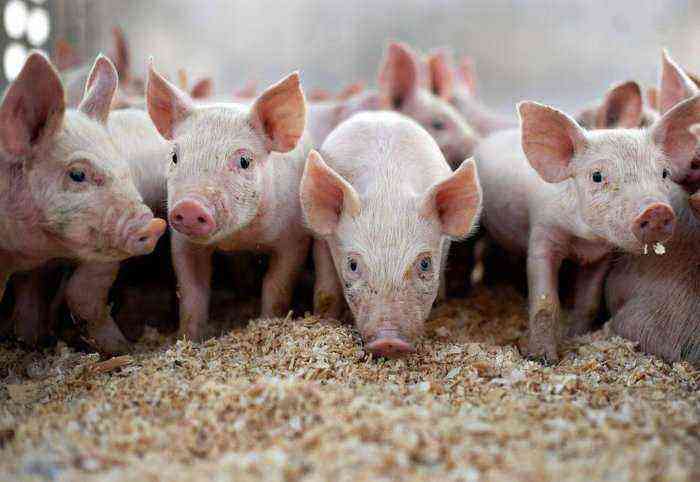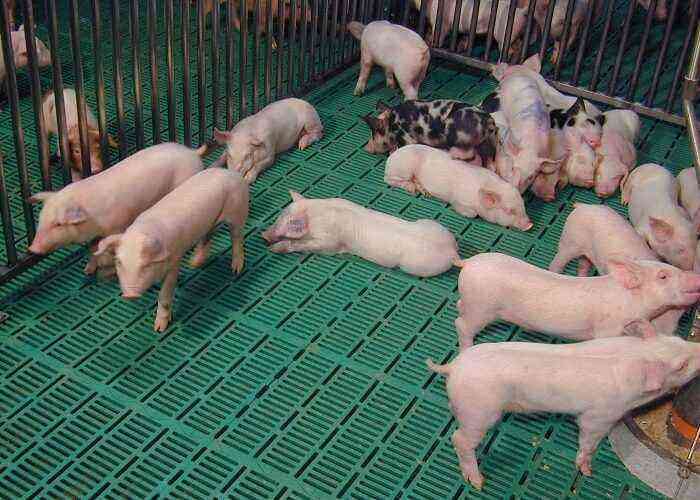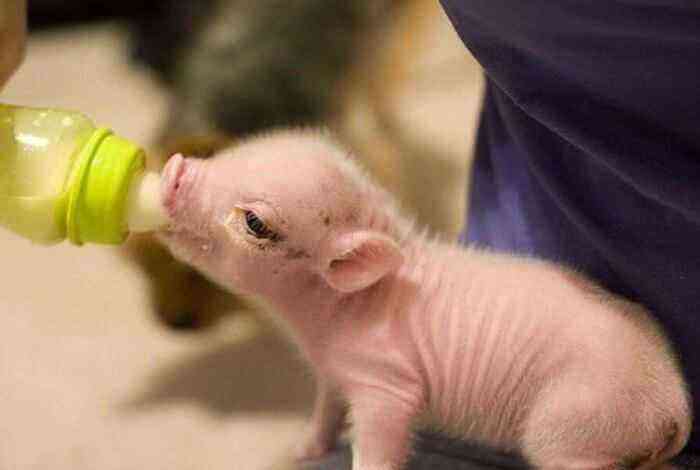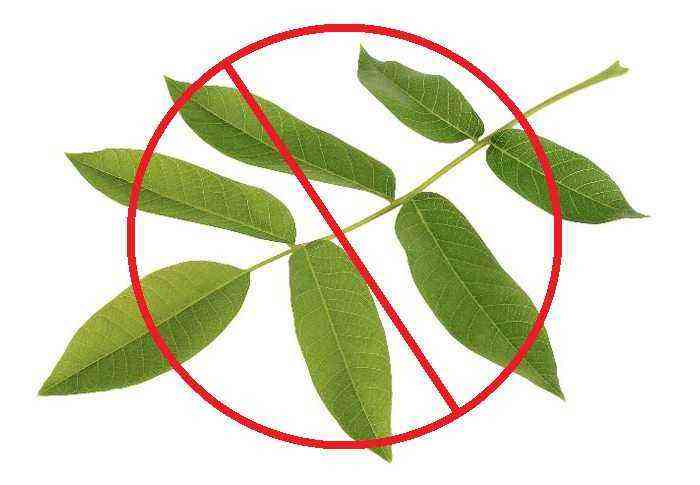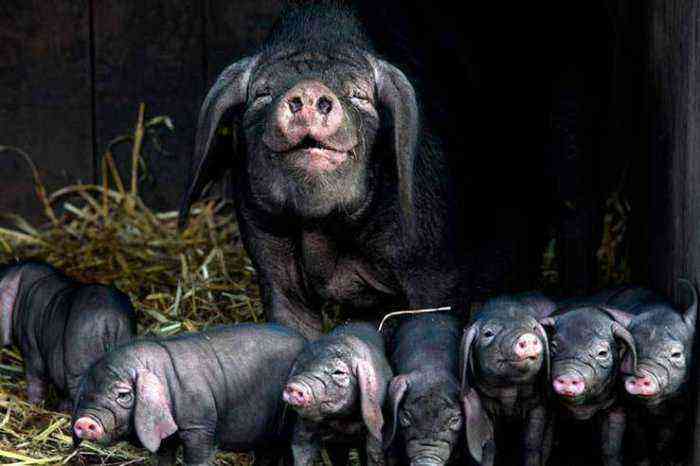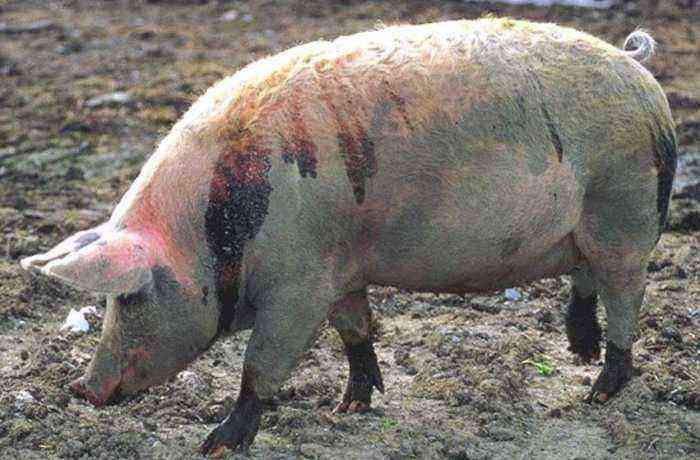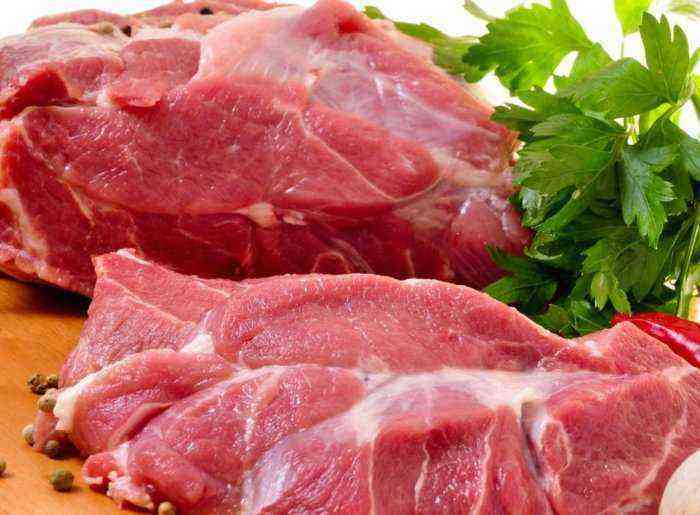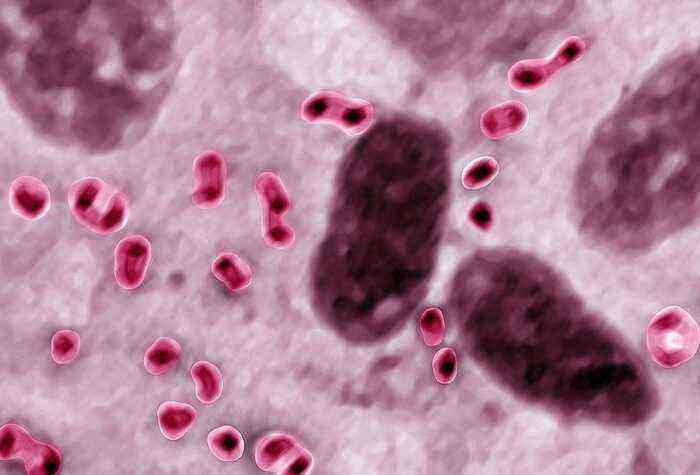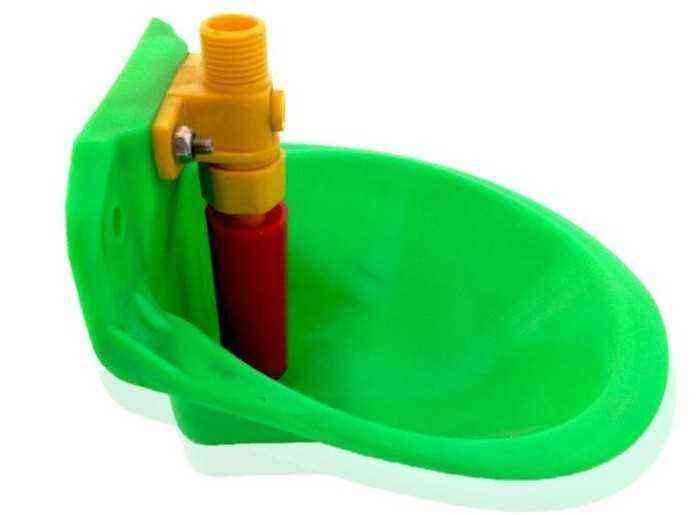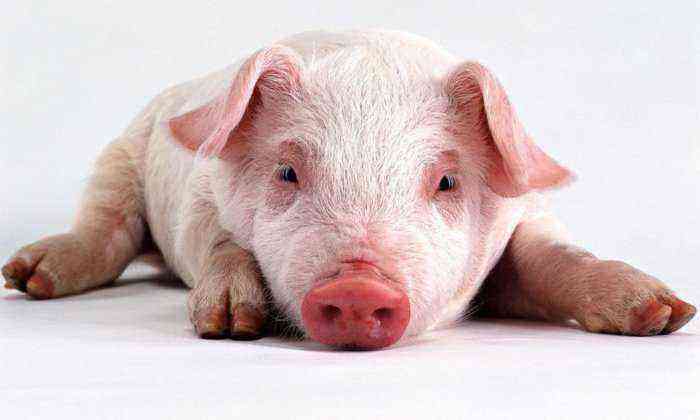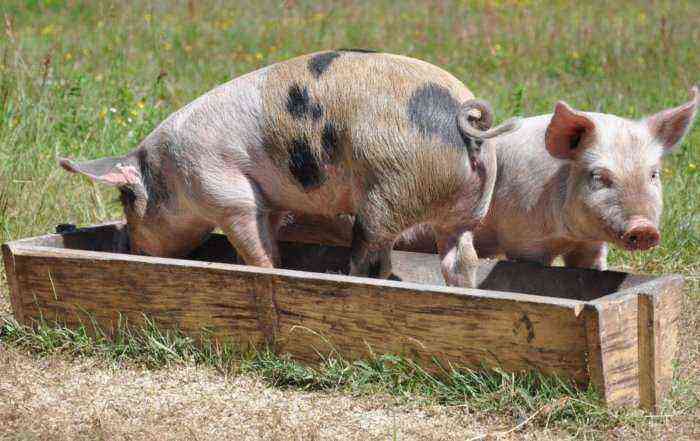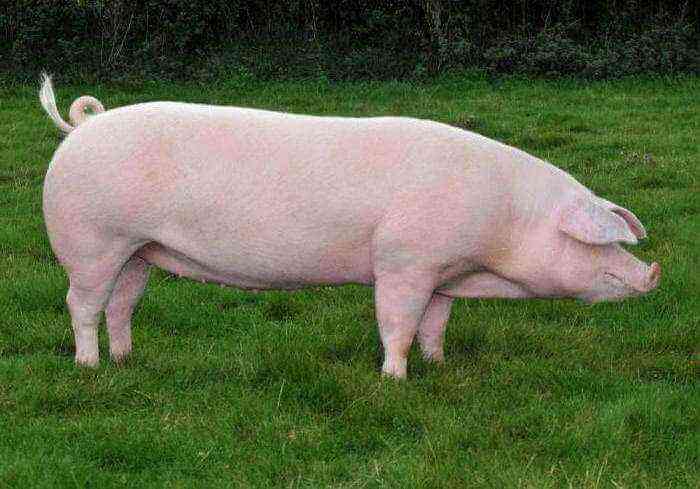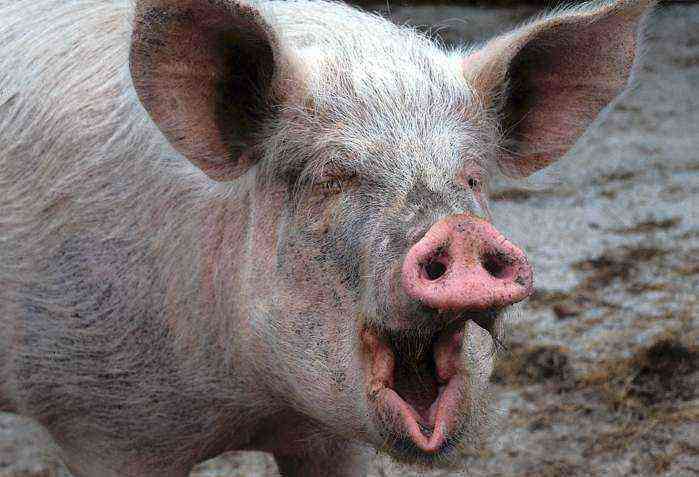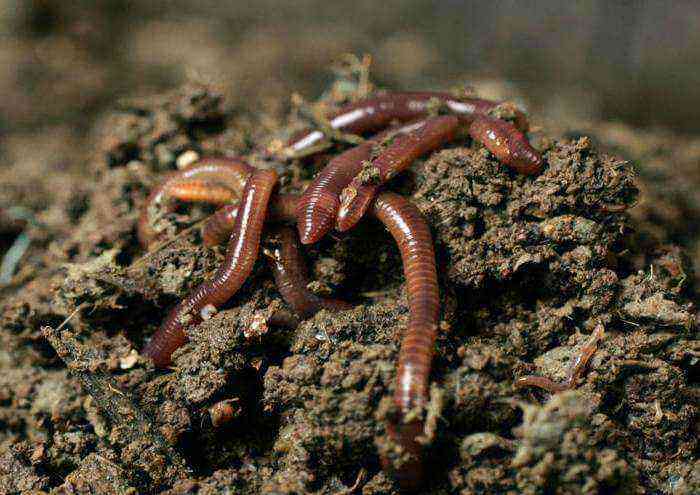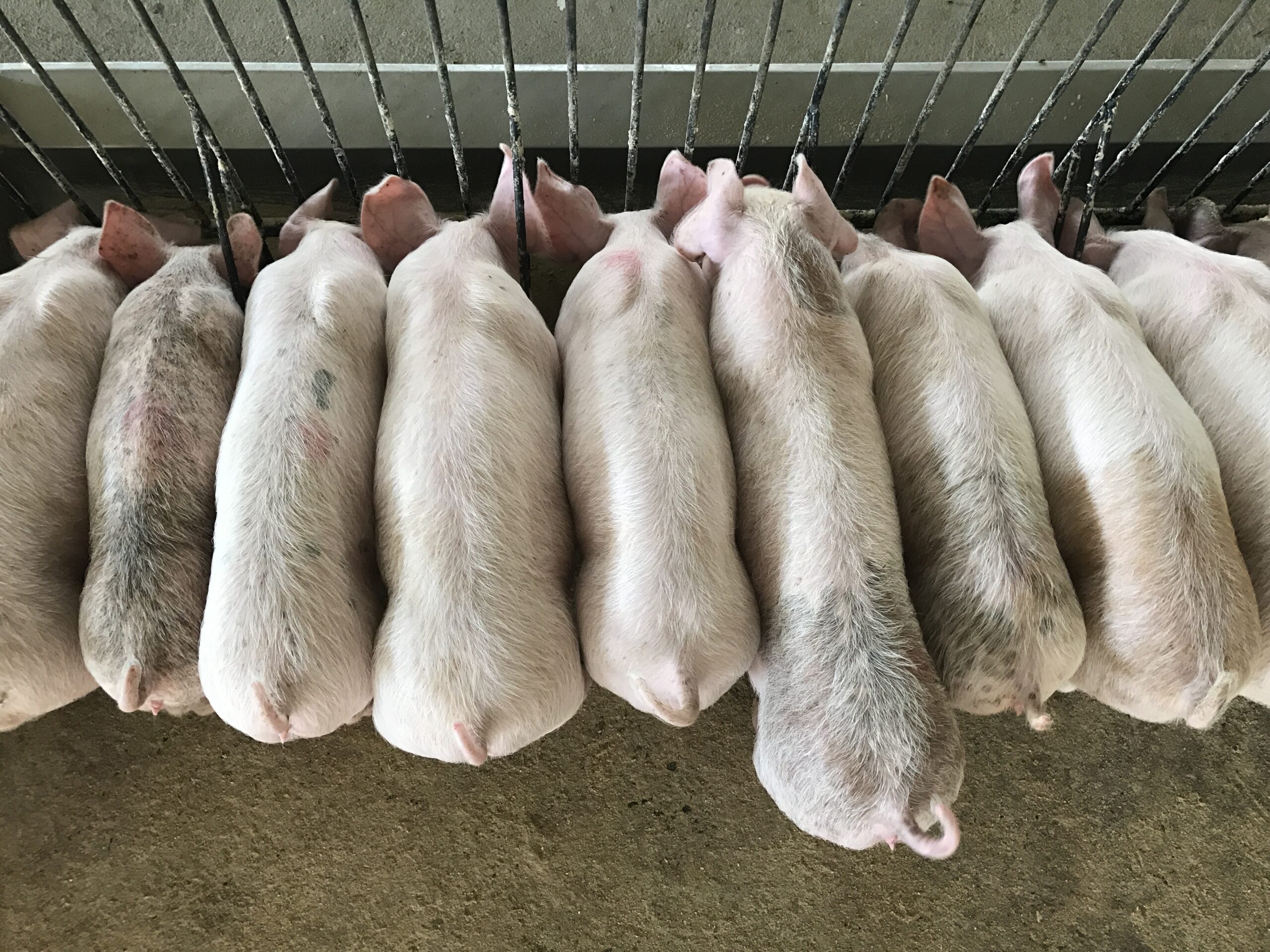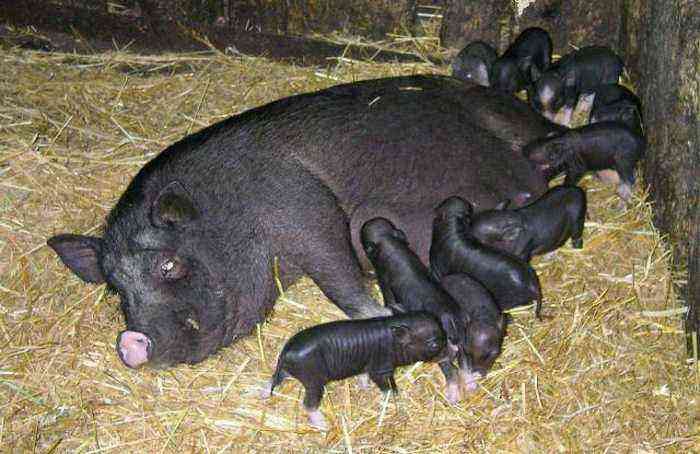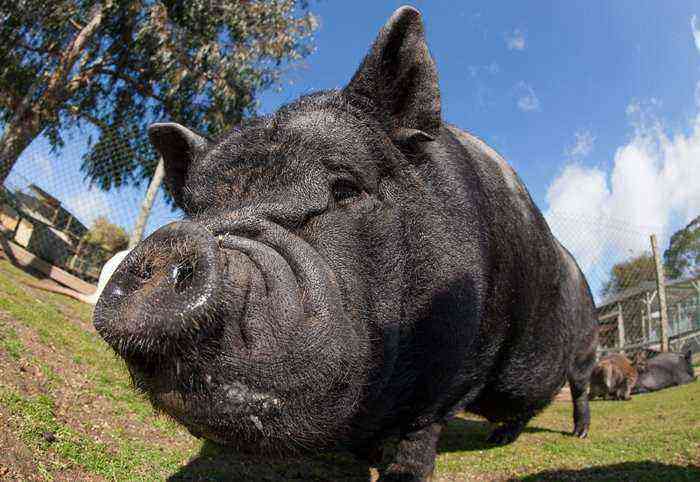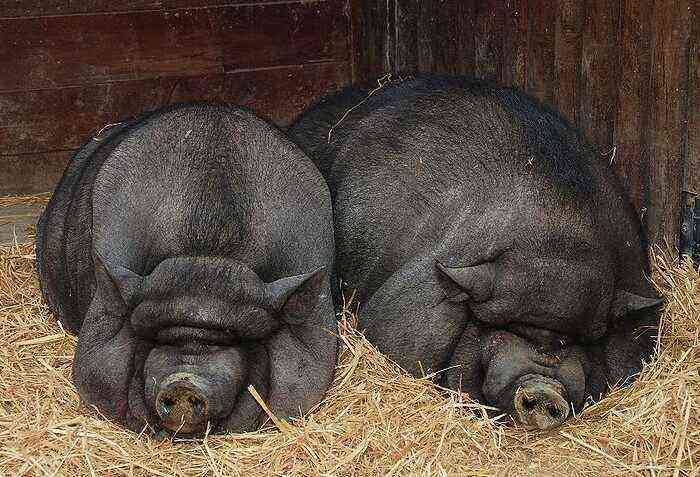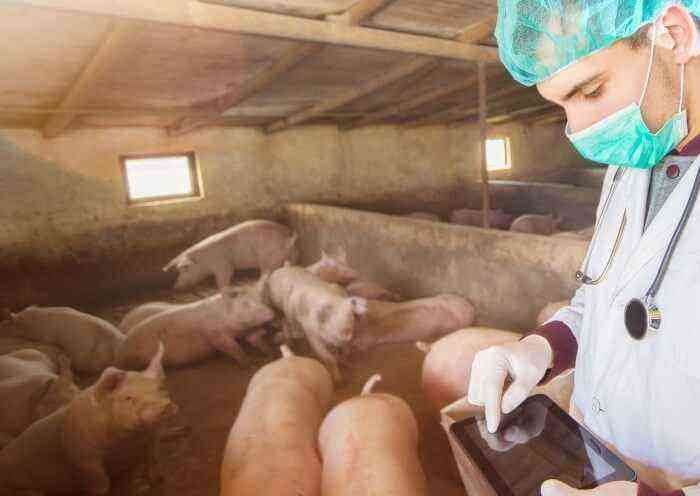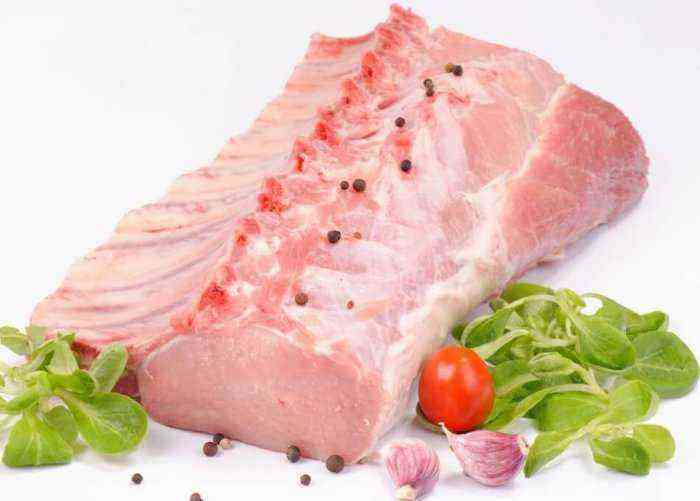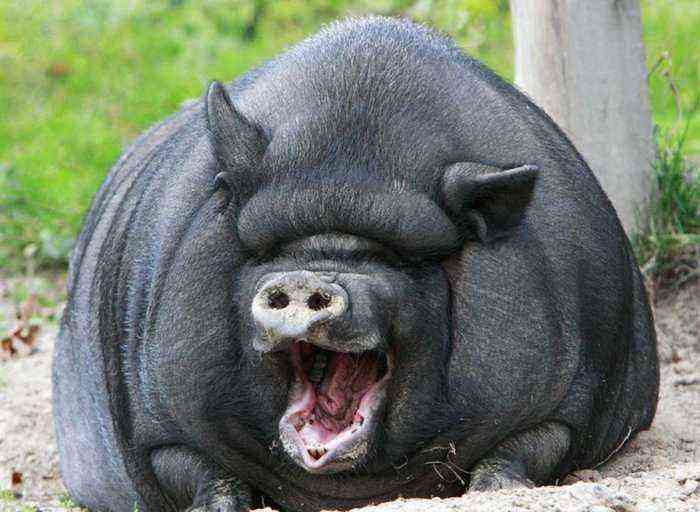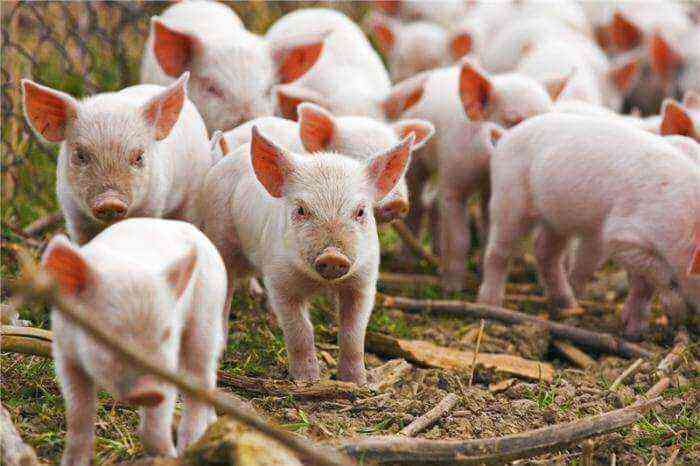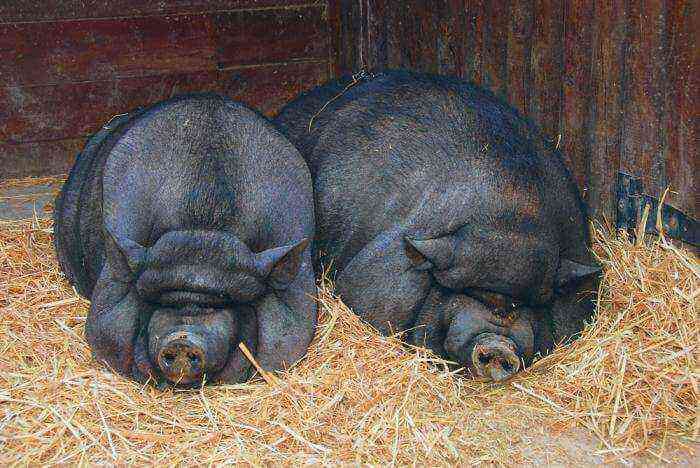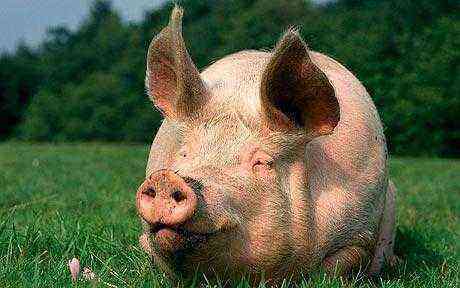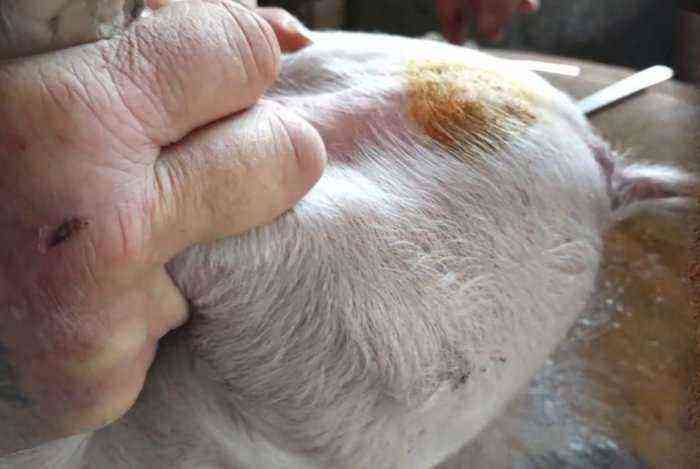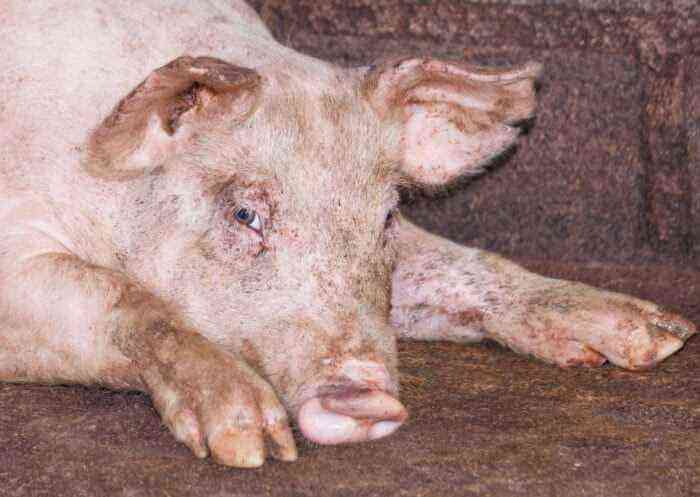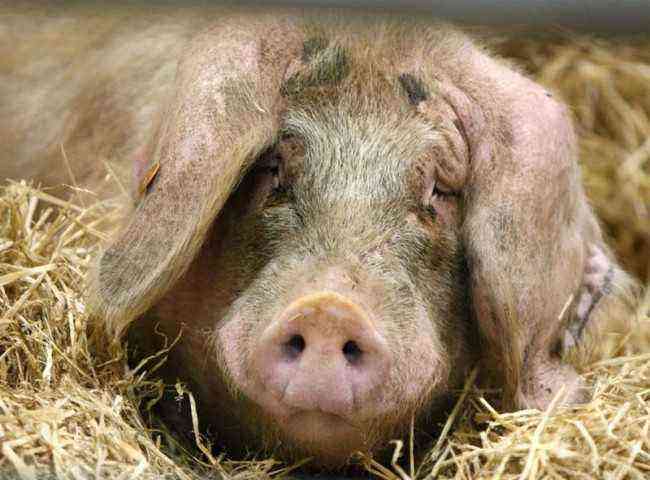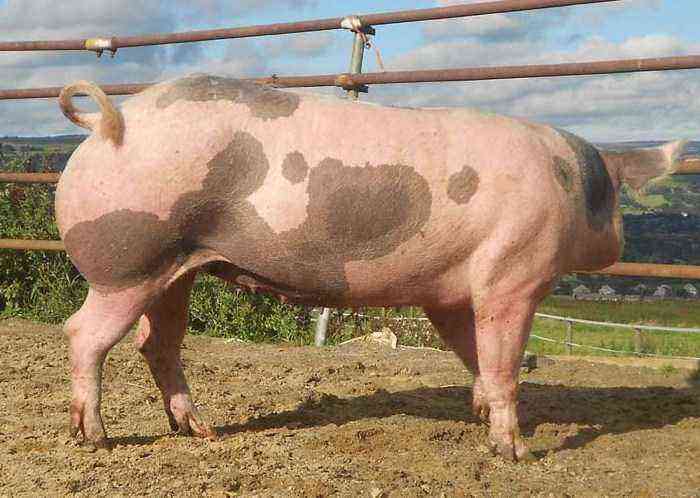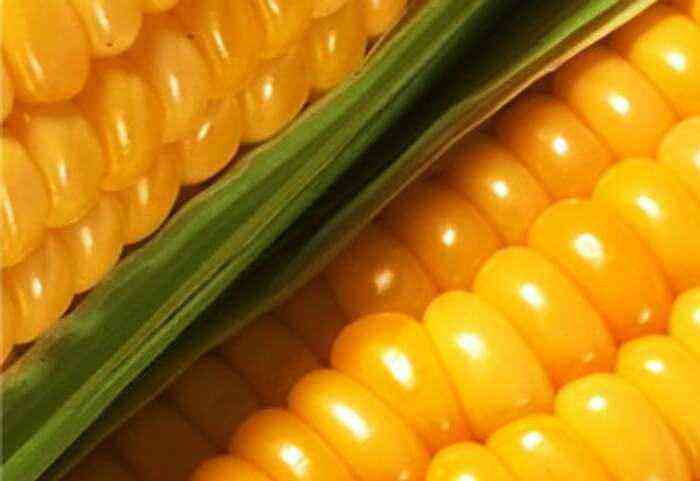Pig farming is a fairly profitable business. However, in order to get the maximum quality meat products at the output, all the nuances of keeping pigs should be taken into account.
Pig breeding
Benefits of pig farming
Keeping pigs at home with the right approach will provide a number of obvious benefits:
- the purchase of feed for pigs will require less expenditure than in the case of sheep or cattle;
- one pig carcass can produce up to 87% pulp, which is the highest among all livestock;
- pigs can provide the largest offspring, gestation in a sow takes an average of 115 days, which allows you to carry piglets twice a year;
- already from a year and a half, representatives of most breeds are suitable for subsequent reproduction, in some varieties puberty occurs even earlier;
- pigs are unpretentious in care, in order to start breeding livestock at first, you can convert the most ordinary barn under a pigsty;
- the sale of lard and animal meat will become a stable source of serious income.
How to choose a pig?
There are several visual signs that can be used to determine if the piglets you are going to buy for further breeding are healthy.
- General condition of the animal. Do not choose sedentary piglets. Most likely, such individuals are already carriers of the infection or have a cold. A healthy piglet will definitely show agility and high mobility.
- Do not choose animals with dirty bottoms. This is the first evidence that the piglet has diarrhea. It can be caused by improper feeding or the presence of worms.
- Tail. In a healthy animal, the tail is always twisted into a spiral. If this is not the case, there is a high probability of a progressive disease or general weakness of the piglet.
- Wool. It should be shiny and smooth to the touch. Excessive stiffness may indicate the presence of scabies or other contagious diseases.
Attention! Even if the piglet visually meets all the requirements, it should still be kept in quarantine for a month to protect your livestock.
If you want to get the highest weight gain when fattening an animal, you should pay attention to the following signs:

Healthy piglets
- elongated muzzle;
- long legs;
- long back (this feature is especially important, the length of the back will largely determine the maximum mass that the animal can gain).
Conditions of detention
The conditions and methods of keeping pigs in the warm and cold seasons differ significantly. When breeding animals, this point cannot be ignored.
In the summer
At this time of the year, the most ordinary barn with equipped pens will be enough for pigs. It should be a spacious, ventilated room with optimal temperature conditions (16-22 degrees Celsius).
Keep animals away from drafts and direct sunlight. In the first case, pigs will often catch a cold, in the second, they will be exposed to the negative effects of ultraviolet radiation. The barn should be well lit, however, window openings and sources of artificial light should be at a height inaccessible to pigs (1,5-2 m).
In the summer, it is also very important to organize a place for walking. Walking in the fresh air will promote rapid weight gain and generally strengthen the immunity of your livestock.
In winter
For the period of cold weather, you will need a full-fledged well-insulated pigsty. The temperature in it should not fall below 5 degrees Celsius, otherwise the pigs will simply freeze. But this value is also the minimum possible. It is mandatory to equip the barn with a heating system and maintain the temperature at least 15-20 degrees.
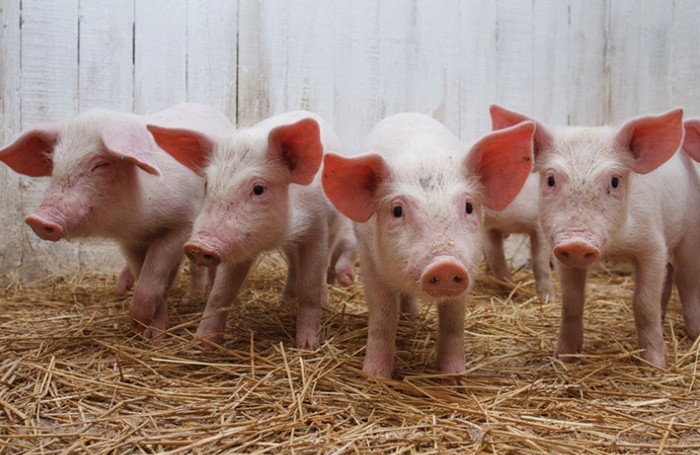
Piglets on the straw
Additional heat will be provided by straw laid on the floor of the pigsty, as well as on its walls and roof from the outside.
In winter, pigs should receive more intensive feeding. As the amount of fresh feed is reduced, the percentage of concentrates is usually increased. Also, animals should receive more mineral and vitamin impurities.
Proper care
In order for the pigs to feel comfortable, get sick less, gain weight quickly and give birth regularly, it is necessary to provide them with proper care. The set of principles to be followed when breeding pigs is as follows:
- strict adherence to the temperature regime (adults will feel good at 12-16 degrees Celsius, piglets need milder conditions, namely 18-22 degrees);
- the air should not be very humid, the maximum figure is 85%, but the optimum air humidity is 70%;
- a damp and cold barn with constant drafts is the main reason for the development of colds in pigs;
- the pigsty should always be clean, cleaning should be done twice a day, otherwise the risk of infectious diseases increases;
- in order for the young to grow intensively and not suffer from rickets, regular walks in the air should be provided, walking the adult livestock is also extremely useful;
- pigs should receive plenty of water, the water should always remain fresh and clean, so it should be replaced in drinkers several times during the day;
- feeders should be cleaned after each meal, weekly treatment with cleaning products containing lye is also necessary;
- mandatory monthly disinsection and disinfection of the barn;
- strict adherence to the diet and composition of the diet, piglets should be fed 5 times a day, growing young animals 4 times, adult livestock 3 times.
Following these simple rules will greatly simplify the care of your livestock.
Feeding at home
The quality of the resulting fat and meat during the fattening of pigs is one of the main criteria affecting the selection of feed. Conventionally, on this basis, food is usually divided into three groups.
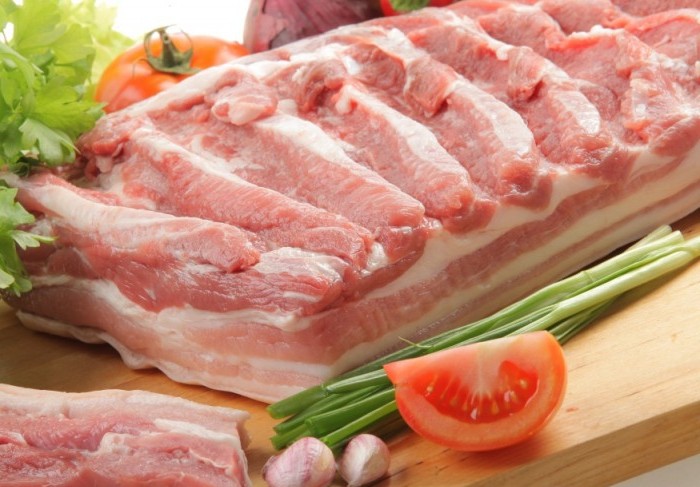
Pork meat
First group. Provides rapid weight gain, promotes an increase in the density and granularity of fat, improves the taste of meat:
- barley, millet, peas;
- carrots, sugar and fodder beets, pumpkin, boiled potatoes;
- clover, alfalfa, sainfoin, nettle, fresh or scalded;
- crushed bean hay;
- heat-treated meat and dairy waste.
Second group. These types of feed are less digestible, but can be included in the daily diet. Their content in the total feed mass should not exceed 50%. This includes:
- rye and wheat bran;
- buckwheat and corn.
Third group. Practically does not contribute to the growth of fat and meat, as well as to improve their quality:
- cake and soybeans;
- oats.
Important! 50-60 days before slaughter, the third group of feeds should be completely excluded from the diet, replacing it with feeds included in the first group.
The number of feedings during the day is different:
- single and lactating sows are fed 2 times a day;
- pregnant sows – 1 time;
- piglets that were taken away from the sow and transferred to rearing – 3 times;
- fattening pigs – 3 times (regular food is given twice a day, coarse – 1 time);
There are three feeding regimens used depending on the age of the individuals, their state of health and the goals pursued by the owner.
- Fattening ad libitum. The ideal solution for young animals, including piglets recently weaned from the sow. Unlimited access to food, the feeder is always full. This type of fattening contributes to the intensive growth of the animal.
- normalized mode. The animal receives food regularly, several times a day. It is necessary to monitor how the pig eats, how much feed is left after each meal, how much feed should be given the next time.
- Limited mode. Typically used for pregnant sows. It is also often used if, after slaughtering an animal, they want to get the maximum meat. The diet includes roughage with reduced nutritional values. Usually animals receive food only once a day.
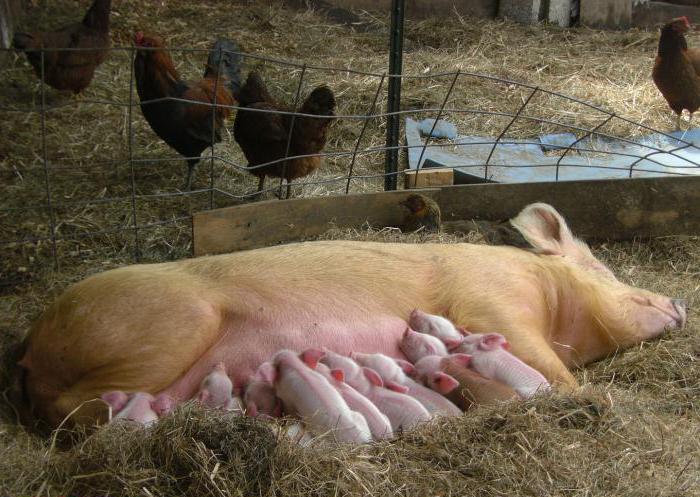
Pregnant sows
What kind of food is harmful?
If we are not talking about legumes, animal products and potatoes, then pigs should be fed crushed and raw. The dominance of boiled food can lead to:
- to inhibition of microflora in the gastrointestinal tract;
- to the weakening of the absorption of vitamins of the B group.
When crushing feed, excessively fine grinding is not desirable. Finely ground grain will affect the balance of acidity in the animal’s stomach. This can cause peptic ulcers and other malfunctions in the digestive system.
Low-quality silage and grain should not be included in the diet of animals. Feed needs to be replaced:
- with fungal diseases of plants and the formation of mold on them (smut and ergot);
- during germination;
- in the presence of uncharacteristic odors and unnatural colors.
It is not recommended to use sprouted potato roots that have a greenish tint. They are characterized by a high content of solanine, which is extremely harmful to pigs.
Do not allow animals to eat out of schedule. Free access to feed will cause the pigs to choose the most attractive morsels, rejecting the less palatable food with their snouts. This can lead to rotting of uneaten leftovers, the consumption of which is highly undesirable. This means that the feeders will need to be cleaned more often, and the cost of feeding will increase.
Vaccination
Timely and complete vaccination will protect livestock from viral diseases and significantly reduce potential mortality. The set of mandatory vaccinations for households looks like this:
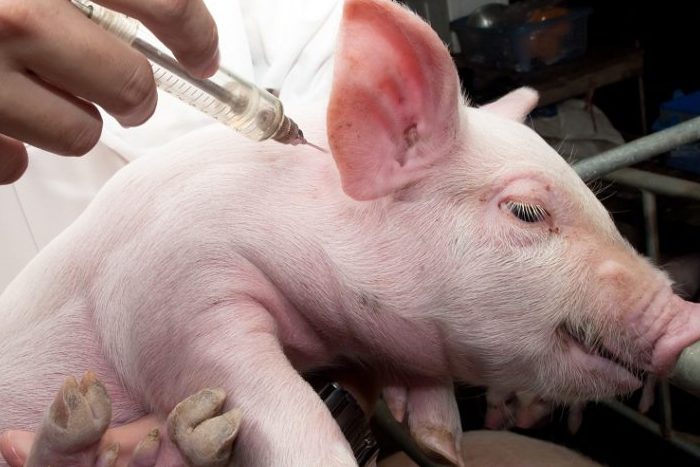
Piglet vaccine
- Prevention of anemia (iron deficiency), age 1-2 days, intramuscular injection of Ferroglucin, Ferranimal or Ursoferran (2 ml, 2 ml or 1,5 ml), subcutaneous injection of Suiferrovit (5 ml).
- Prevention of rickets, oral intake of Trivit, fish oil, Tetravit (1 drop during the day).
- Prevention of pasteurellosis, salmonellosis, enterococcosis, age 20-30 days, 2 intramuscular injections of PPD (3-4 ml) with a break of 5-7 days, 2 intramuscular injections of ATP (2 ml) with a break of 7-10 days. In the case of SPS, revaccination with a volume of 4 ml is provided after 60-70 days.
- Prevention of swine fever, age 40-45 days, the dose of the vaccine is diluted in 2 ml of 0,9% saline sodium chloride. Revaccination with the same amount is carried out after 85-100 days.
- Prevention of erysipelas, age 60-70 days, the deposited vaccine is administered twice with a break of 12 to 14 days, the first dose is 0,3 ml, the second is 0,5 ml. Revaccination after 27-30 days. There is the use of a dry vaccine or BP-2.
- Deworming. When pigs reach the age of 70-120 days after the introduction of vaccines, it is required to treat animals against worms. The following drugs are used: Univerm, Tetramizol, Ivermek, Levamisole.
Important! All newly acquired animals must be quarantined. During the first month after purchase, any contact of such piglets with other livestock should be excluded.
Conclusion
Although most breeds of pigs are unpretentious animals, they still require proper care. A zealous owner will first of all take care of the health of his animals, their satiety and conditions of detention, as well as regular offspring. Only in this case, the volumes and quality indicators of meat and fat produced will grow.

